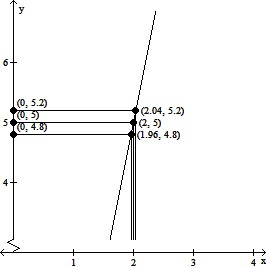Determine whether the following planes are parallel, orthogonal, or neither. If they are neither parallel nor orthogonal, find the angle of intersection.
??


?
A. The planes are neither parallel nor orthogonal, the angle of intersection is 
B. The planes are neither parallel nor orthogonal, the angle of intersection is 
C. The planes are orthogonal.
D. The planes are parallel.
Answer: A
Mathematics
You might also like to view...
Sketch the vector field in the plane along with its horizontal and vertical components at a representative assortment of points on the circle x2 + y2 = 4.F = -  i -
i -  j
j
What will be an ideal response?
Mathematics
Find the derivative.y = 
A. 
B. 
C. 
D. 
Mathematics
Find the volume of the solid generated by revolving the region bounded by the given lines and curves about the x-axis. Use the method of disks.y = x2, y = 0, x = 0, x = 3
A.  ?
?
B.  ?
?
C.  ?
?
D. 9?
Mathematics
Use the graph to find a ? > 0 such that for all x, 0 <  < ? ?
< ? ?  < ?.
< ?.

A. 0.04 B. 0.4 C. 0.5 D. 3
Mathematics